A starter drum suits anyone keen to jump into percussion. Striking the drum is more than just creating a racket—it’s about discovering rhythm, coordination, and technique. Regular practice is key to achieving mastery.
Learning how to play drums is one of the most exciting journeys we can go on. It can seem daunting at first, not knowing which drum kit is best for you and how to approach those first steps. This drums for beginners guide will put your mind at rest and get you started on your musical adventure.
Getting started
Firstly, well done for finding us and getting to this stage. Let’s get to grips with your grip, break down those technical terms and make starting your beginner drumming journey as easy as possible.
Drumming for beginners involves learning the basic drumming techniques, rhythm patterns, and drum notation. Start by practicing simple beats and gradually progress to more complex rhythms.
By the end of this article you’ll be clued up on how to read music, and know all about the drum equipment that will turn you into a superstar drummer.
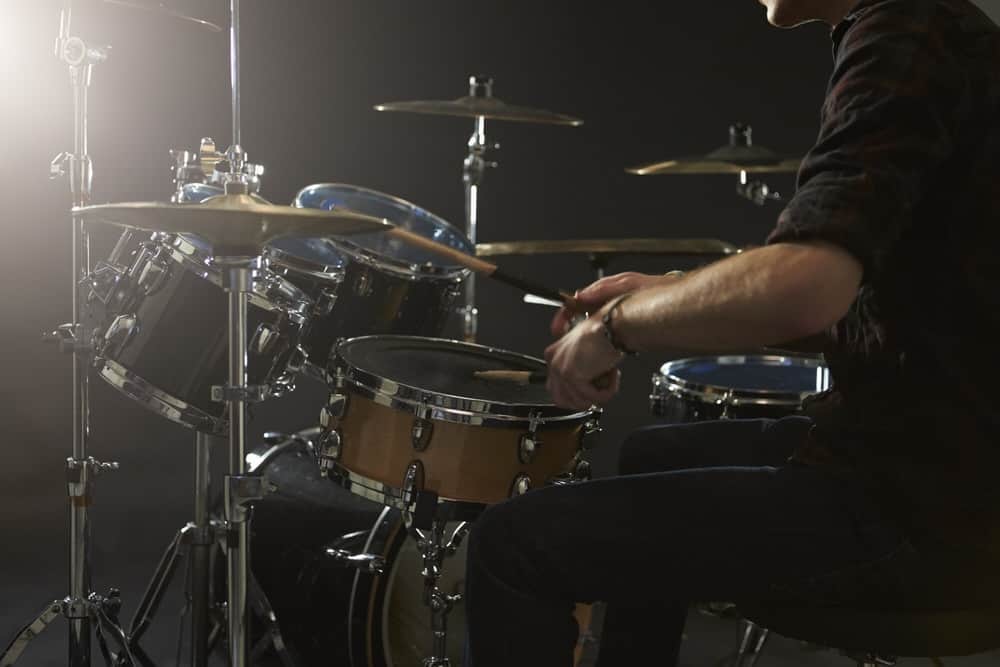
The parts of a drum kit
SNARE DRUM
The snare drum sits in the centre of the drum kit and is possibly the most recognisable sound of the drum kit. As a beginner this would be the first drum that you would start with, learning how to read notation and working on your grip.
The shell of the drum is typically wood (often mahogany, birch or maple) or metal (where it could be aluminium, copper or brass). Occasionally, plastic and even more experimental materials are used.
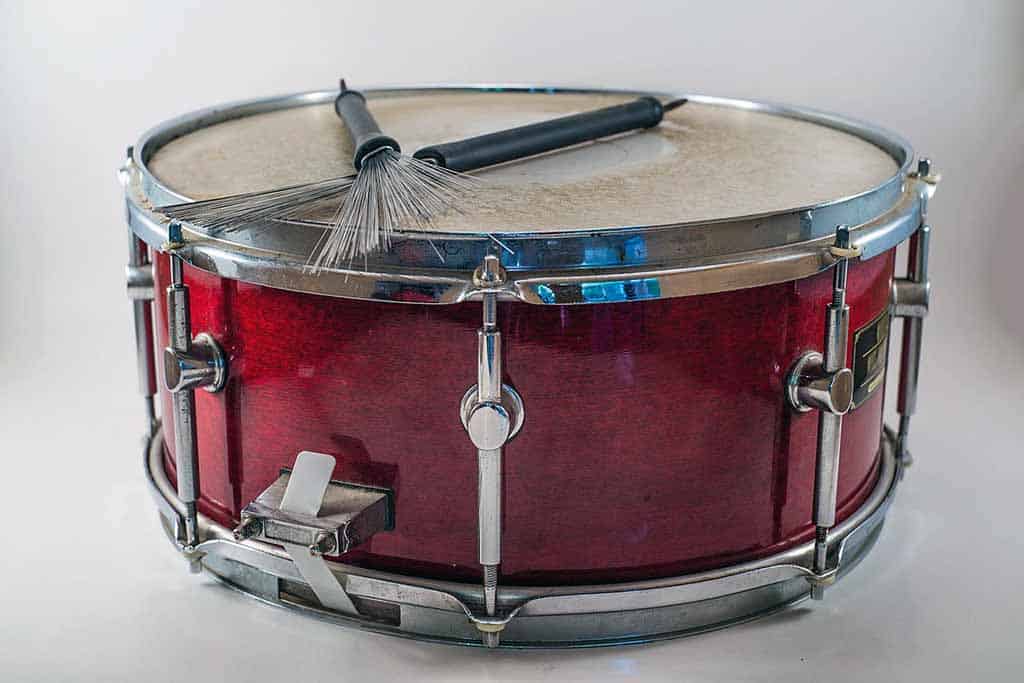
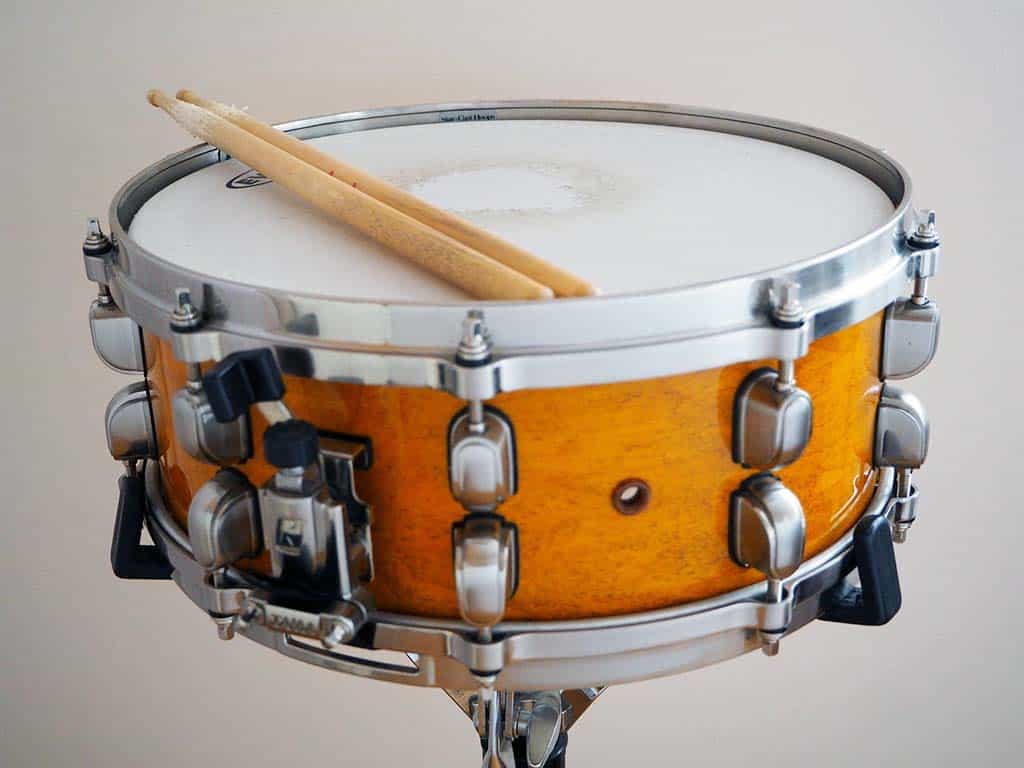
The snare wires (underneath the drum) give the snare its distinctive sound by vibrating on the snare head (underside head).
The rims sit on the top and bottom of the drum and keep the heads firmly in place. They are usually die-cast or triple-flange metal, but wooden hoops are also an option, which give a warmer tone to the sound.
The manufacturer pairs the rims and shells depending on each of their personalities, but of course it is all down to preference.
BASS DRUM
The Bass drum, also known as the kick drum, is the largest drum, as well as being the only drum that you play with a pedal.
The bass drum provides a solid foundation when playing a groove. Using the bass drum pedal makes the sound punchy, which is pivotal in timekeeping within a band as you can’t miss it!
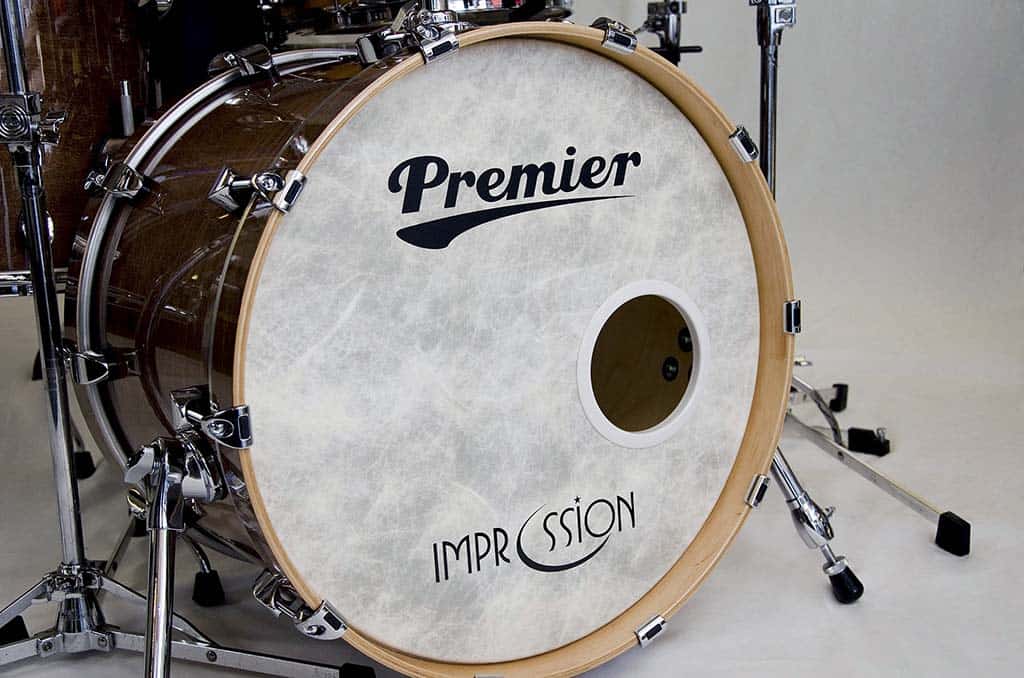
Toms, Hi-hat & Cymbals
On a standard five piece drum kit you have three tom toms: high, middle and low tom (often known as the floor tom), their names relating to their pitch. The high and middle tom are usually mounted above the bass drum, with the floor tom sitting to the right of the drummer. We use the toms to play drum fills (fancy patterns!) following a drum beat.
The hi-hat consists of two cymbals which can be opened and closed with the hi hat pedal. This allows you to play a variety of sounds when you hit the top one with sticks.
There are many other cymbals, but the main ones are the Crash and Ride.
The crash cymbal is used to mark the start of a section in a song or accentuate particular rhythms or moments.
The ride cymbal can be used in many drum beats, however you want to use it!
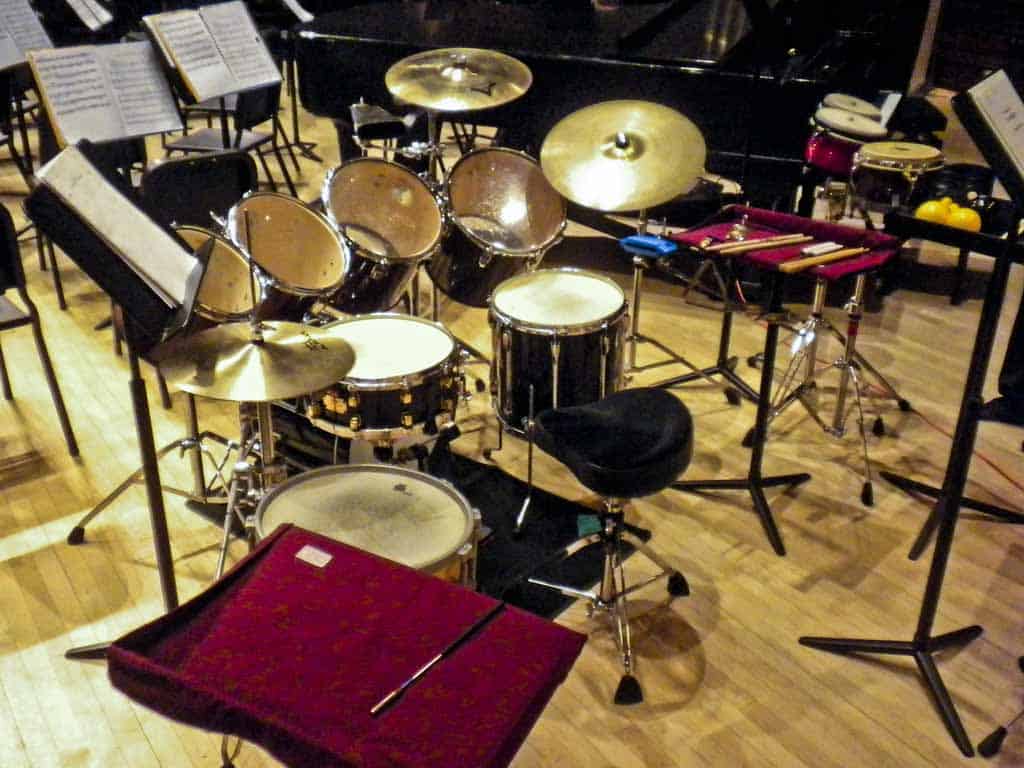
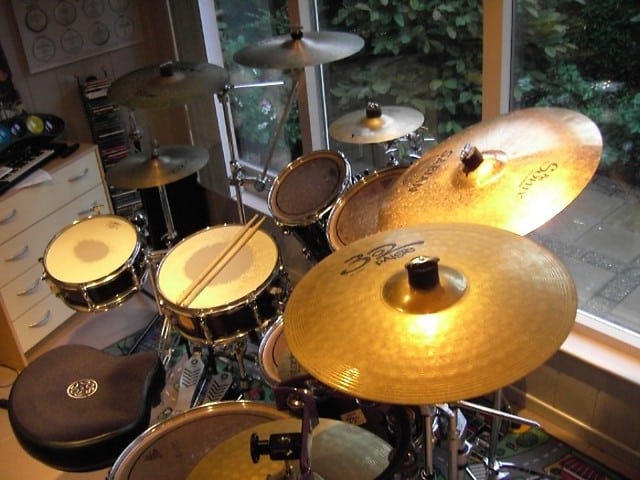
Your Drum kit
How to set up drums
Some drummers set up their drum kit differently depending on whether they are right or left handed. The important thing is that every part of the kit is in easy reach.
As a beginner, the best set-up to get started would be the bass drum sitting in the centre with the high tom and middle tom above it and the floor tom sitting on the floor on the right hand side.
Your snare sits just under the high tom.
The hi hat goes to the left of the snare and the ride above the middle and floor tom.
The crash can go between the hi hat and the high tom.
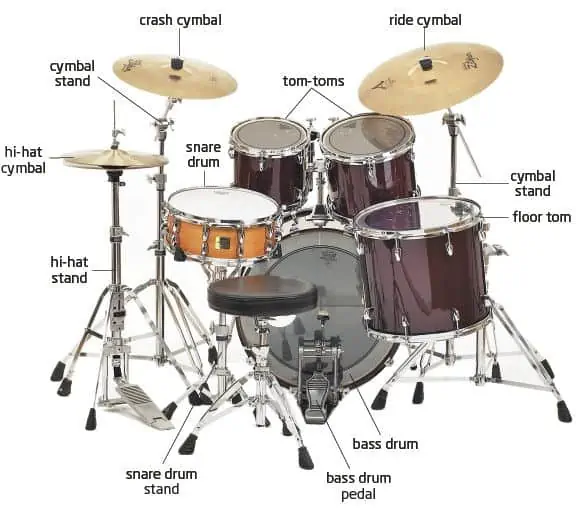
How to tune drums
First of all you will need to make sure you have a drum key. This is a specific key to adjust the bolts that feed into the lugs on your drum.
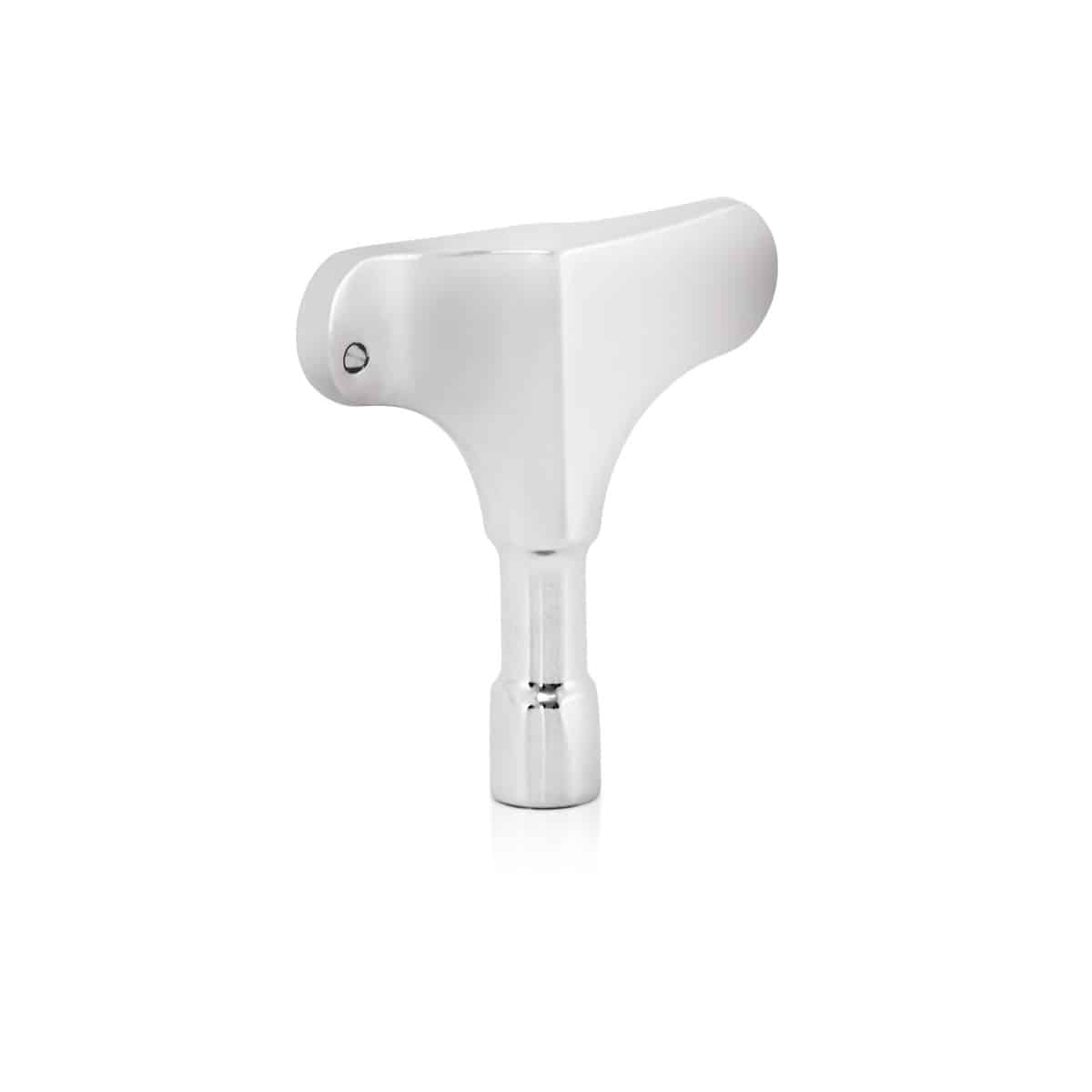
COMES WITH: Text
FEATURES: Hole for keyring
Sabian Drum Key
When you check the price above, you’ll see there are loads of great places to buy this item. Our personal favorite is Gear4music.
It is the largest music retailer in the UK and fast becoming the most respected online music shop in the US too. Their customer service is excellent, they have competitive prices, really fast shipping, and usually have the longest guarantee.
Most professional musicians use Gear4music, so there is no reason why you shouldn’t too!
- Solid construction
- Industry standard size
- Compact
- Incompatible with Sonor or slot-style drum sets
The professional musician who wrote this article combined many things,
from the product build, manufacturer’s reputation through to feedback
from other users, to create our famous TedScore™.
How to practice drums
The best drummers are also great musicians. Keep your practice interesting and relevant by using a combination of warm ups, drum exercises and songs as well as learning to read drum notation and playing by ear.
If you have a drum teacher, practise what they have told you to practise, it will get you to that next step so much faster!
Being able to count rhythms is key to overcoming being able to play a challenging rhythm. Start off simple, counting crotchets and quavers and then playing them.
Practicing every day, little and often, will always produce better results than once or twice a week for long periods of time. Regular focused practice will improve your dexterity, muscle memory and reading of drum notation at a much quicker rate
You could also read our dedicated article on How To Practice Drums here.
How to warm up on drums
Playing the drums can be as physical as playing sport. With this in mind, spending five minutes every time you start playing as a warm up is vital. It is also a great opportunity to work on other aspects of your playing such as timekeeping and technique.
You don’t need a whole drum kit to warm up, a simple drum pad is a great tool!
Playing rudiments and simple exercises to get each limb moving will not only warm you up but improve your coordination too. Good metronome apps will aid your warm up, especially in the early stages.
There are many instructional videos and online lessons available. Check out this great beginner warm up on Youtube.
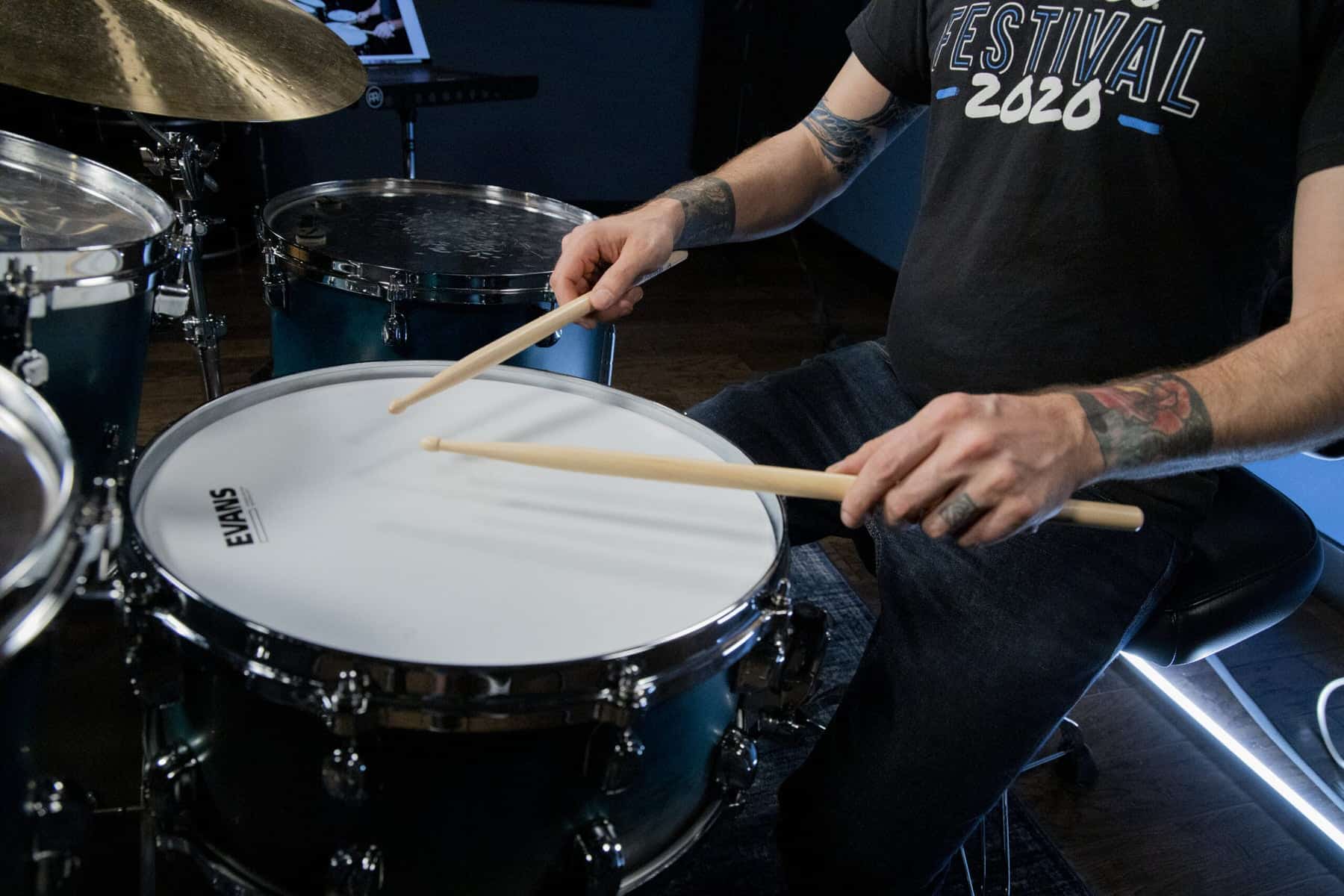
Taking care of your drum kit
Taking care of your drum kit is as important as learning how to play it. There are various accessories that can help keep it protected and looking fresh.
If you are planning on taking your kit to different venues then cases are a must. These come in hard or soft options and will protect your drums from knocks and scrapes.
The hard-case options tend to be bulkier, so if you have limited storage space soft-cases may be better for you.
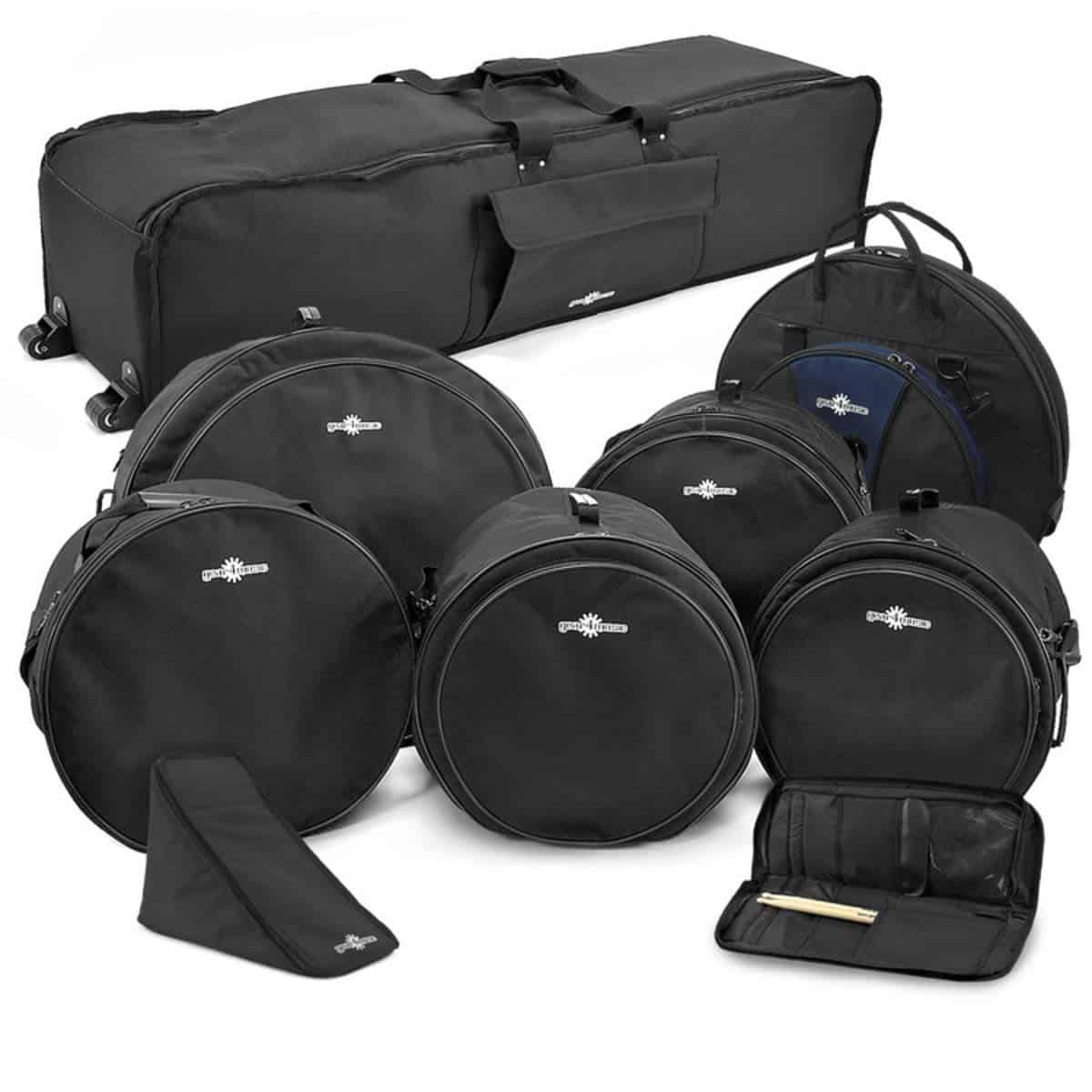
COMES WITH: Includes Padded Cymbal Bag and Hardware Bag
FEATURES: 2-year warranty & 30-day money-back guarantee included
Complete Drum
Bag Pack
When you check the price above, you’ll see there are loads of great places to buy this item. Our personal favorite is Gear4music.
It is the largest music retailer in the UK and fast becoming the most respected online music shop in the US too. Their customer service is excellent, they have competitive prices, really fast shipping, and usually have the longest guarantee.
Most professional musicians use Gear4music, so there is no reason why you shouldn’t too!
- Fleece Lining prevents the drums from scratching
- Fitted with handles for easy transport
- Light to carry
- Incredible value for money
- If touring then these are not as good as a hard-case
The professional musician who wrote this article combined many things,
from the product build, manufacturer’s reputation through to feedback
from other users, to create our famous TedScore™.
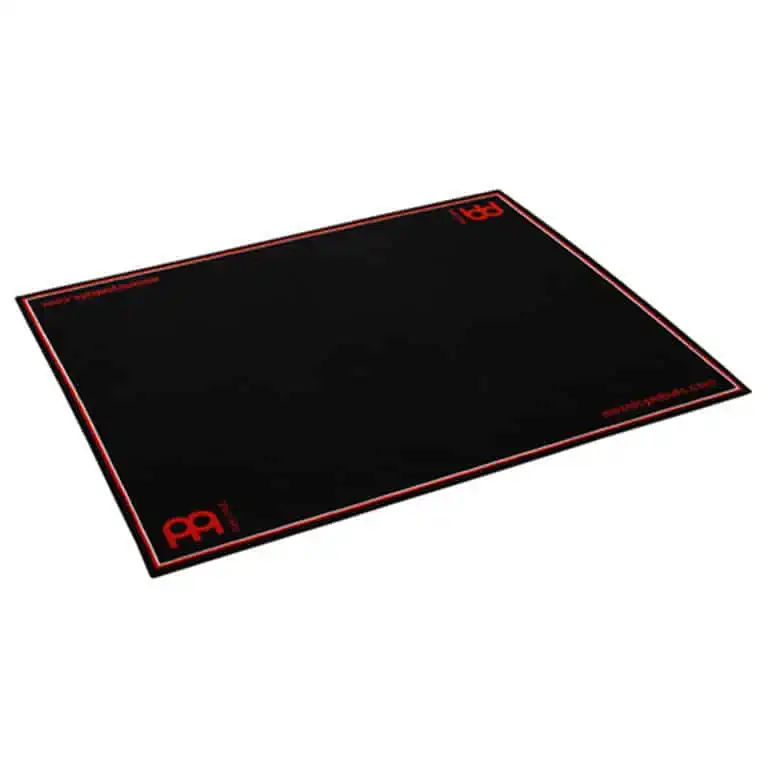
COMES WITH: Bag for easy transportation
FEATURES: Anti-Slip rubber on the bottom side
Meinl Drum Rug
Black MDRBK
When you check the price above, you’ll see there are loads of great places to buy this item. Our personal favorite is Gear4music.
It is the largest music retailer in the UK and fast becoming the most respected online music shop in the US too. Their customer service is excellent, they have competitive prices, really fast shipping, and usually have the longest guarantee.
Most professional musicians use Gear4music, so there is no reason why you shouldn’t too!
- Simple design will look professional on gigs
- Comes with a bag for easy transportation
- Does not fold as small as other options
The professional musician who wrote this article combined many things,
from the product build, manufacturer’s reputation through to feedback
from other users, to create our famous TedScore™.
Drum equipment for beginners
Sticks
Drum sticks are an extension of your hands, and you want them to feel comfortable and completely balanced. They come in a whole range of sizes so if you can get down to your local drum shop to have a look and try them out then that’s great.
Most drumsticks are made from Hickory, but they also come in Maple, Birch and Plastic to name a few. Many sticks come with nylon tips which can help achieve more definition.
Vic Firth 5A drumsticks are considered by many to be the best all round stick, and are thought of as an industry standard. For those with small hands, a Vic Firth 7A may be a more suitable choice.
You may also consider using a heavier stick in your practice, as this is a great way to build up your muscles
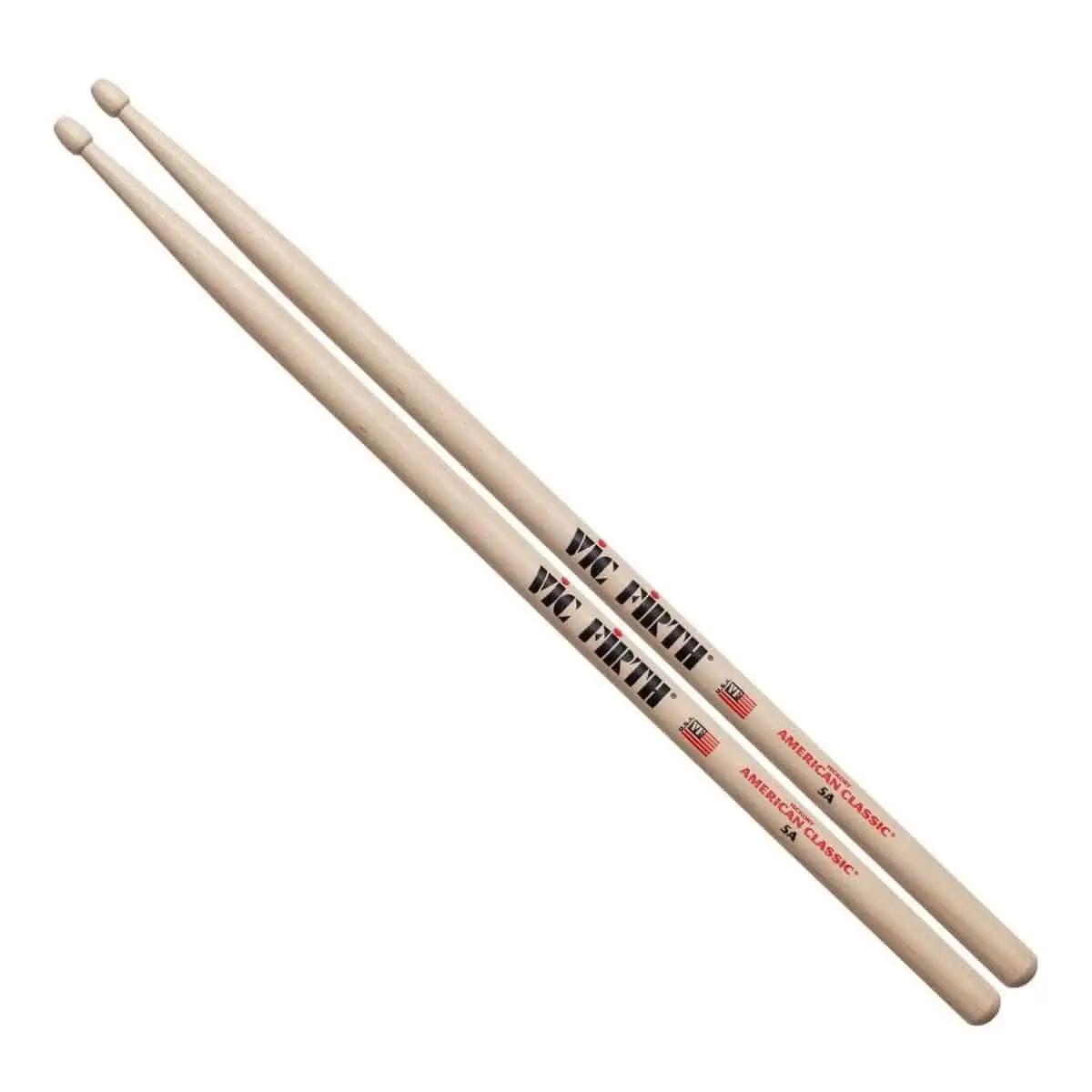
COMES WITH: Set of drumsticks
FEATURES: Wood tip
Vic Firth American
Classic 5A
Hickory Drumsticks
When you check the price above, you’ll see there are loads of great places to buy this item. Our personal favorite is Gear4music.
It is the largest music retailer in the UK and fast becoming the most respected online music shop in the US too. Their customer service is excellent, they have competitive prices, really fast shipping, and usually have the longest guarantee.
Most professional musicians use Gear4music, so there is no reason why you shouldn’t too!
- Versatile - these sticks are a good size and weight to cover all styles
- Superior Durability
- Slightly less grip than other brands
The professional musician who wrote this article combined many things,
from the product build, manufacturer’s reputation through to feedback
from other users, to create our famous TedScore™.
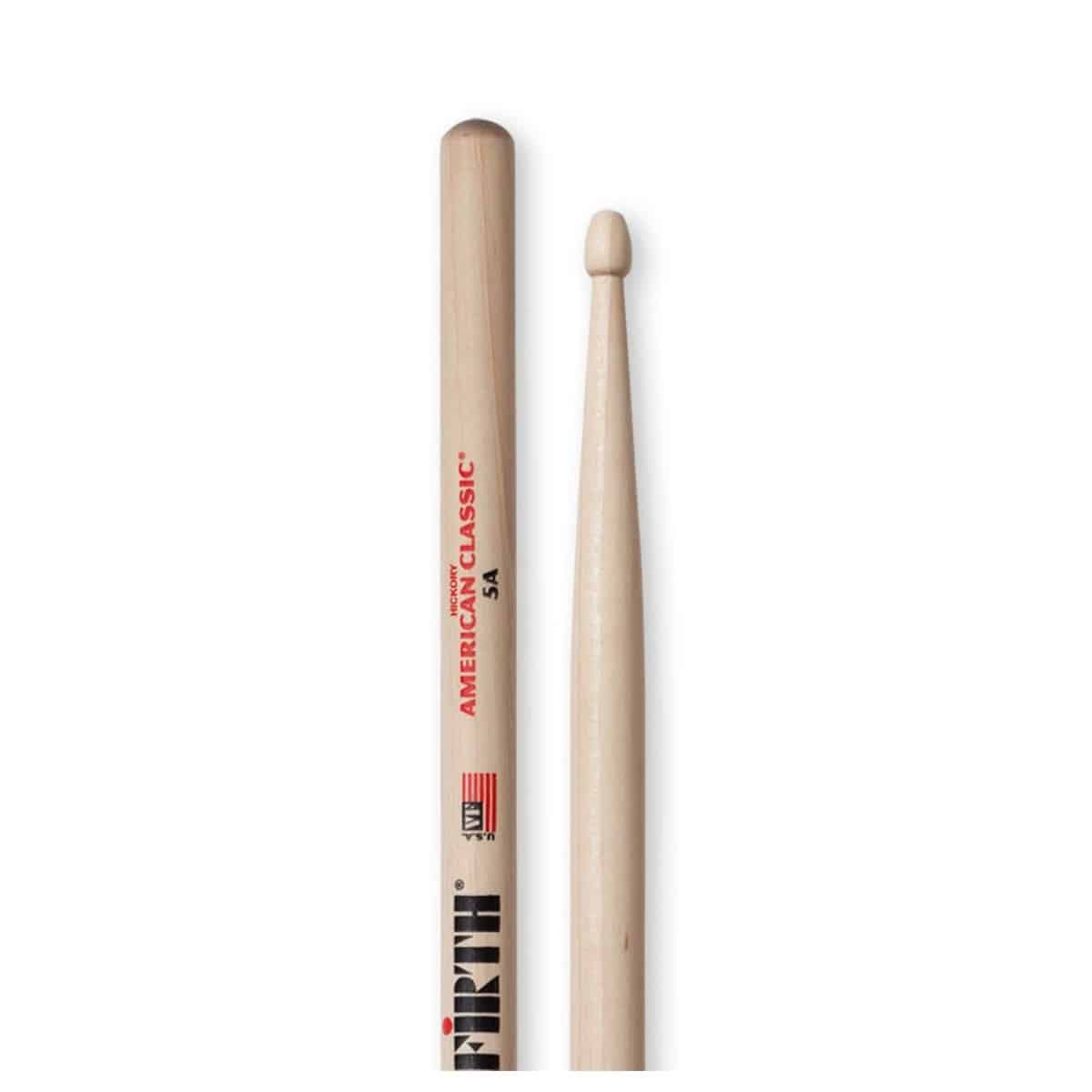
COMES WITH: Set of drumsticks
FEATURES: Wood tip
Vic Firth American
Classic 7A
Hickory Drumsticks
When you check the price above, you’ll see there are loads of great places to buy this item. Our personal favorite is Gear4music.
It is the largest music retailer in the UK and fast becoming the most respected online music shop in the US too. Their customer service is excellent, they have competitive prices, really fast shipping, and usually have the longest guarantee.
Most professional musicians use Gear4music, so there is no reason why you shouldn’t too!
- Superior Durability
- Good for young players because they are smaller and lighter
- Not great for loud playing
The professional musician who wrote this article combined many things,
from the product build, manufacturer’s reputation through to feedback
from other users, to create our famous TedScore™.
Metronome
Metronomes make repeated clicking sounds at an adjustable speed. It develops our timekeeping skills and sense of pulse.
Playing all types of rhythms in time with a metronome is a fundamental skill needed to be a top class drummer.
As a beginner, get used to playing simple rhythms in time with the metronome at a steady tempo, first with your right hand, then with your left hand and finally using both hands. Incorporating metronome practice from day one will help you learn how to keep a steady beat and save you all sorts of problems further down the line as you play more complex rhythms.
Here is a fun and interesting video showing you a few ways of making the most out of your metronome.

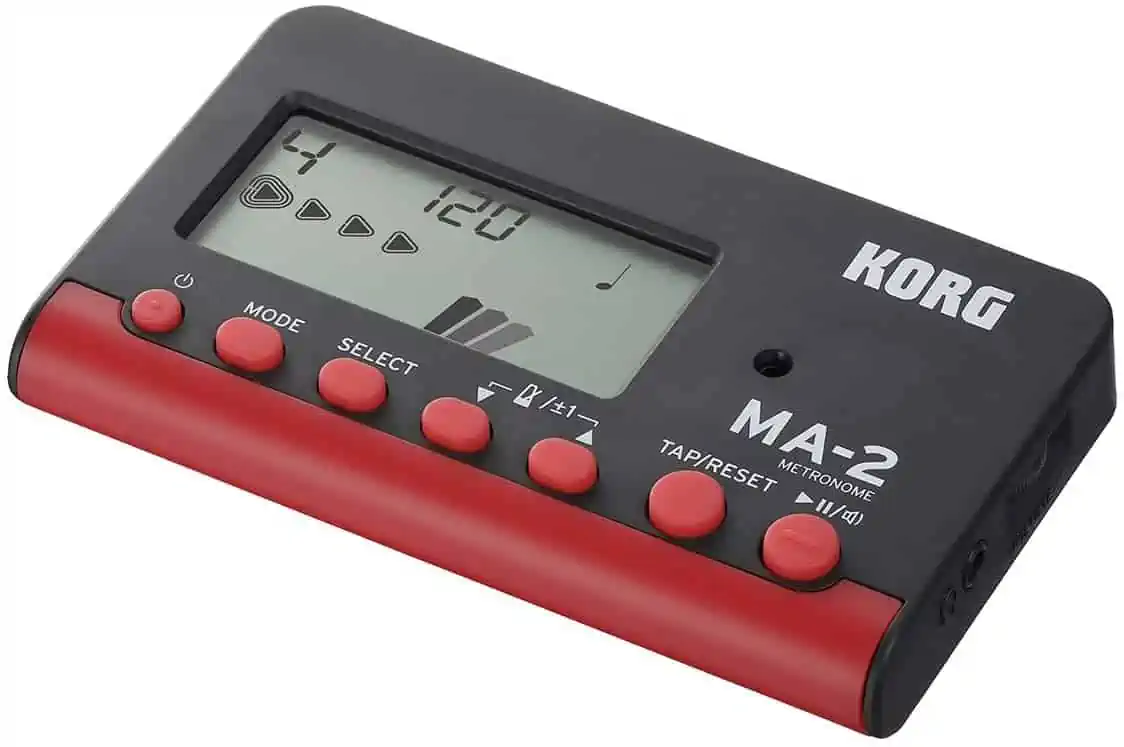
COMES WITH: A larger and more easily readable display
FEATURES: Timer, enhanced volume, and a useful 'sound-out' mode
Korg MA-2 metronome
When you check the price above, you’ll see there are loads of great places to buy this item. Our personal favorite is Gear4music.
It is the largest music retailer in the UK and fast becoming the most respected online music shop in the US too. Their customer service is excellent, they have competitive prices, really fast shipping, and usually have the longest guarantee.
Most professional musicians use Gear4music, so there is no reason why you shouldn’t too!
- Has a Tap Tempo function, making it super easy to use
- Earphone jack with adjustable volume
- Stylish display
- Compact - so easy to travel
- None!
The professional musician who wrote this article combined many things,
from the product build, manufacturer’s reputation through to feedback
from other users, to create our famous TedScore™.
Ear protectors
As a drummer, your ears are as important as your hands and feet. Your hearing is priceless. There are a range of ear protectors to choose from. The higher-end products are molded to your ears and can come with different filters, but a decent pair of one size fits all ear plugs can be just as beneficial.
You want to be able to hear everything you are playing, but at a quieter volume, and the ER20 Ear Plugs are an affordable option.

COMES WITH: Hard pocket sized carrying case for safe storage
FEATURES: Filters specific frequencies to retain/balance sound quality
Vibes High-Fidelity
Earplugs
When you check the price above, you’ll see there are loads of great places to buy this item. Our personal favorite is Gear4music.
It is the largest music retailer in the UK and fast becoming the most respected online music shop in the US too. Their customer service is excellent, they have competitive prices, really fast shipping, and usually have the longest guarantee.
Most professional musicians use Gear4music, so there is no reason why you shouldn’t too!
- Reproduces the same sound as your ears, but quieter
- Comes with a protective carry case
- Interchangeable ear tips mean a close fit should be possible
- Not moulded to your ear, so may not have the closest fit possible
The professional musician who wrote this article combined many things,
from the product build, manufacturer’s reputation through to feedback
from other users, to create our famous TedScore™.
Practice pad
A practice pad is a great accessory for all drummers. They can have the same feel and response as a normal drum. Pads are great for keeping noise to a minimum, keeping the neighbours happy, practising in front of the television, and even easy to travel with.

COMES WITH: 8mm Mount
FEATURES: Non-skid surface
Gretsch 12”
Practice Pad, Orange
When you check the price above, you’ll see there are loads of great places to buy this item. Our personal favorite is Gear4music.
It is the largest music retailer in the UK and fast becoming the most respected online music shop in the US too. Their customer service is excellent, they have competitive prices, really fast shipping, and usually have the longest guarantee.
Most professional musicians use Gear4music, so there is no reason why you shouldn’t too!
- Realistic Stick Rebound
- Non-skid surface
- This pad is only one-sided, so there is not a choice in noise level
The professional musician who wrote this article combined many things,
from the product build, manufacturer’s reputation through to feedback
from other users, to create our famous TedScore™.
How to hold drum sticks
This is certainly an aspect of playing the drums that you want to get right early on. You can get away with poor technique at the start but it will come back to bite you! The way you hold the drum sticks affects your stamina, control, power and speed. Having a solid technique will also save you from an injury.
There are two ways of holding the drumsticks; Matched Grip and Traditional grip.
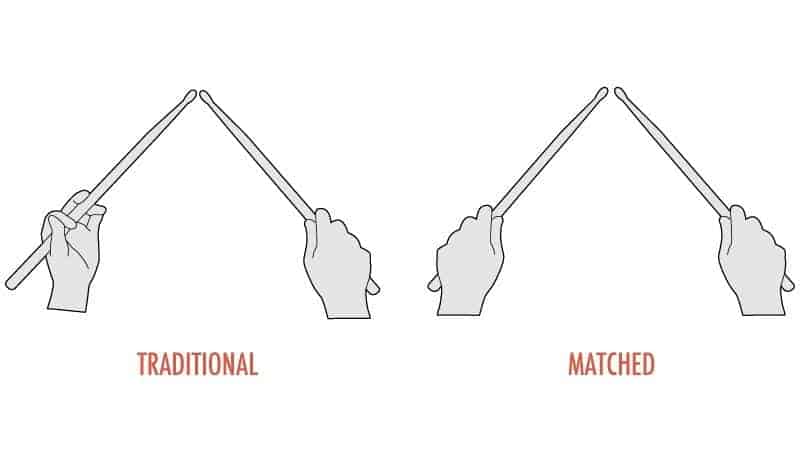
Matched grip
Essentially you hold the drum stick the same way in both hands. Your thumb and index finger should be on opposite sides of the stick. We call this a fulcrum (pivot point).
There are three variations of matched grip; French, German and American, each with their own advantages.

With French grip the palms of your hands face each other, with your fingers doing the majority of the work when moving the stick. Because of this, it can be easier to play more intricately as well as playing at faster tempos.
For German grip, the palms of your hands are parallel to the drumhead, when you rest your sticks on the drum, you should have a clear right angle. The movement comes mostly from the wrist, and this can make for a huge dynamic range because you have the full use of your arm.
American grip has taken the best bits of both the French and German grips. If you pick the sticks up, you’re probably holding them naturally in the American grip. Your palms neither face down to the head or to each other but at a 45° angle. This allows you to use your fingers for those complex passages, together with your wrist for power.
Traditional grip
Traditional grip originates from military drumming. As they suspend the drum from a sling, the angle of the drum requires a change in grip to avoid striking the rim of the drum. It is widely used in jazz drumming.
Your right hand remains in matched grip, and your left hand changes to traditional. Rest the stick between your thumb and ring finger. The fulcrum is between your thumb and index finger. Keep your other fingers relaxed so you do not choke the drum stick. This grip also requires you to rotate your forearm.
How to play drum rudiments
Rudiments are a fundamental part of drumming. Simply put, they are different patterns with your hands. They will help you hypnotize your friends with the most complicated looking drum fill and get you out of sticky situations when playing intricate passages.
Beginner drummers start simple by playing single strokes, double strokes and paradiddles on the snare drum with your metronome. Then you can start to experiment around the drum kit adding the bass drum and hi hat into the mix.
Paradiddles
Singles Strokes: R L R L
Doubles Strokes: R R L L
Paradiddles R L R R L R L L
R = Right Hand
L = Left Hand
Try to memories the rudiments as you learn them so you can concentrate on what you are playing and how they sound. We want each hand to produce the same sound, so keeping an equal weighting in each hand is important.
How to read drum sheet music
Being able to read drum notation opens up many doors further down the line, like being able to play with all kinds of ensembles and musicians where reading sheet music would be a prerequisite. Start with simple crotchets and quavers before attempting something more challenging.
As with all instruments, drum notation is based on pitch. The lower the sound, the further down the stave (five lines) it sits. Each drum and cymbal has their own space or line. Drums are given round noteheads whereas cymbals are marked with crosses.
For a more in-depth article on reading drum notation, click here.

How to read drum tabs
Drum Tabs differ from sheet music as it is specifically for playing the drums. When reading drum tabs, the layout is different. You may find this more confusing than sheet music. As well as being spread out, it tells you when not to play something (using the dash) as well as telling you when to play.

The parts of the drum kit have been abbreviated and given their own line. Where there is an ‘x‘ marked, you play a cymbal, and where there is an ‘o‘ marked, you play a drum.
Different symbols can tell you to play the instrument in a different way. For example, an ‘o‘ on the HH tells you to play an open hi hat, and a ‘g‘ on the drums tells you to play a ghost note.
Here are each of the abbreviations:
CC – Crash Cymbal
RC – Ride Cymbal
HH – Hi Hat
S – Snare Drum
T1 – Tom 1 or High Tom
T2 – Tom 2 or Middle Tom
FT – Floor Tom
B – Bass Drum
HF – Hi Hat Foot
Drumming Terms
Groove
The groove is the main drum beat in the song. It sets and maintains the tempo and style.
Fill
A fill is typically played at the end of a section and leads into the next. It can be as simple or as complicated as you like but should always be in the same style as the song you are playing. An easy way of creating your own fills is to start with your rudiments and play around with them. Get creative!
Tempo
Tempo is the musical term for speed. We measure it in beats per minute, bpm for short. For example, at the start of a song it may say ♩= 120. This translates into 120 crotchet beats per minute. To hear this accurately, you can set your metronome to 120. As drummers, we often get asked to play with a click track. This is comparable to a metronome, but can adjust to tempo changes. They are often used in performances to ensure the tempo does not change from show to show. Tempo can play a big part in your drum lessons as it is such an important part of being a drummer.
Tip, Neck, Shaft, Butt
These are all parts of the drum stick. The tip is at the very top, the part of the drum stick which is used the most for striking the drums and ride cymbal. The neck is often used to play the hi hat and crash cymbals. You hold the drumstick on the lower half of the shaft. And the butt is the very end of the stick.
Bell
The bell is referring to the centre of the cymbal – also known as the ‘dome’.
Rim Click/Cross Stick/Rim Shot
These are different ways of playing the snare drum. A rim click (or cross stick) is where you place the butt of the drumstick onto the drum head and then bring the stick down onto the rim (whilst keeping your fingers out of the way). A rim shot is where you strike the drum head and the rim at the same time (with the same stick). Both of these techniques create completely different sounds to the normal sound of the snare drum, which makes it such a versatile part of the drum kit.
Trashy HH
To play trashy hi-hat simply means to allow the two cymbals to move and jangle around as you strike them. This creates a sloshy and trashy sound, great for building up to a chorus and creating a much thicker sound. The way to achieve this is to lift your foot off the hi-hat pedal slightly.
Let ring/choke
This is referring to your cymbals. ‘Let ring’ means to let the cymbal ring and not do anything to stop the sound. ‘Choke’ is the opposite of ‘let ring’, this is where you play the cymbal and as soon as possible catch the cymbal in your hand to stop it from sounding.
Ghost Note
As the name suggests, this is a note that you barely want to hear. It is usually played on the snare drum and requires a greater degree of control in your technique.
Buzz Roll
This is the easiest roll for beginner drummers to start with as you let the drumstick bounce an indefinite amount. You need to keep hold of the drumstick in the fulcrum whilst allowing the stick to bounce naturally but also applying enough pressure to bounce the stick at the speed you require.
Drums for Beginners
Summary
Hopefully, we have settled your mind and you now feel much more confident taking the next step to play drums. The most important thing is that you enjoy playing the drum set. If you have any questions or suggestions, make sure you write below!


Best Drumsticks
Vic Firth American Classic 5A Hickory Drumsticks
The industry standard for very clear reasons!

Best Practice Accessory
Gretsch 12” Practice Pad, Orange
Ideal for practicing whenever the mood takes you!
FAQ's
Yes. If you start off with the basics and practice regularly, then everyone can learn to play the drums.
A good book, such as the London College of Music Step This Way is a good place to start, you can even get through the first few pages without a drum and instead tap the rhythms on your leg!
A standard 5 piece drum kit is best for a beginner. This means it will include a bass drum, snare drum and three tom toms.
Beginner drummers should start with one drum learning the basic notation and rudiments. This will give you a solid foundation to build on.
Yamaha Stage Custom Birch 5pc 20” – £599/$832
There are three stand-out points which make this kit superior to other options.
1. Yamaha have used Birch for the shells, which gives the drums a warmer tone without losing its powerful and focussed sound.
2. The Yamaha Enhanced Sustain System, also known as YESS. This means there is minimum contact between the hardware and the shell, which enhances the sustain of the sound produced by the drum. As well as this it allows you to position the toms closer together for greater efficiency when moving between the toms.
3. The heads that are provided in this deal are Remo Ambassador Heads. These are the most popular drumheads in the world. Coated heads (a rougher surface) allow you to use brushes, which opens a whole new sound to explore.
Most drumsticks are made from Hickory, but they also come in Maple, Birch and Plastic to name a few. Many sticks come with nylon tips which can help achieve more articulation.
A good pair such as the Vic Firth 5A will cost you £9/$11.
Cymbals vary substantially in price. A starter set such as the Paiste 101 costs £133/$185 but you can go for a premium set such as the Zildjian K Custom for £895/$1,244.
The American grip on drums is a technique used by drummers to hold their drumsticks. It involves holding the drumstick with the thumb on top and the other fingers wrapped around the stick, and is commonly used in rock and pop music. It is different from the traditional grip, which involves holding the drumstick with the thumb underneath and is commonly used in jazz and orchestral music.


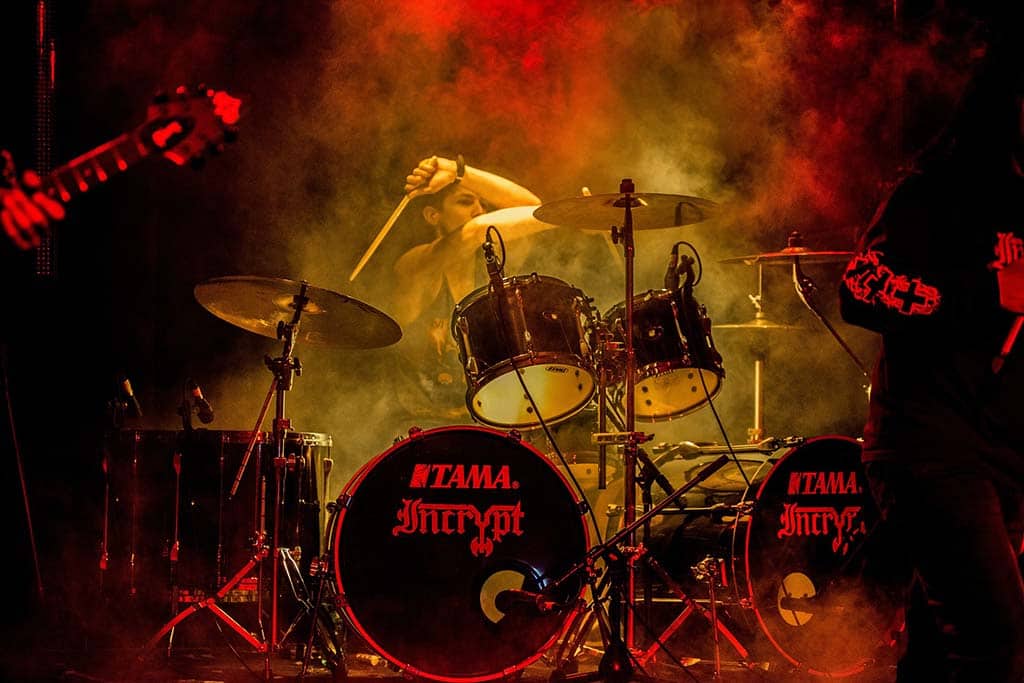








I loved that you elaborated on how we’d learn to play the drums and the importance of keeping practicing. I have a younger nephew who loves music and looks like he’s got something for the drums, so I’ll talk to his dad about your article and suggest he finds a tutor for him. Thanks for the information on practicing our drums every day to help us develop our dexterity skills.
My son started playing recently and I can finally help him along his journey.
Good look Brian to you and your son…